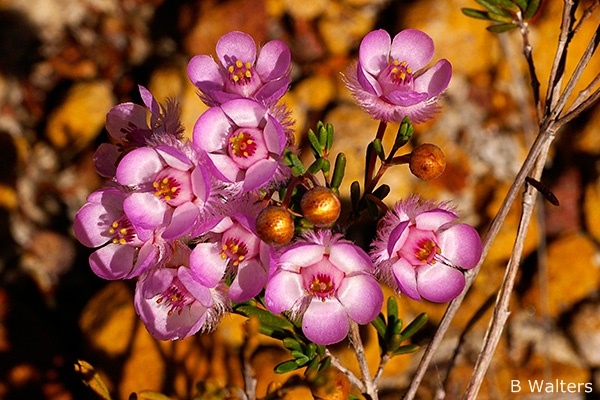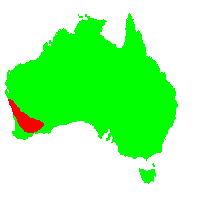General Description:
Verticordia is a genus of very showy Australian plants, a number of which are well know in the cut flower trade. The vast majority are confined to Western Australia with two or three occurring in other states. The genus has undergone botanical revision in recent years and 99 species are now recognised. The popularity of some species for floral arrangements has resulted in overpicking from the wild and research into farming of selected forms is being undertaken. The plants are commonly referred to as “morrisons” or “feather flowers”, due to the fringed calyx lobes.
Verticordia picta is a small, erect shrub up to 1.5 metres high but often smaller. It has small, linear leaves from 50 to 70mm long. The fringed, 5-petalled, pink or white flowers are about 10-12 mm in diameter with the petals being the most prominent part of the flower. The flowers often darken in colour as they age and are usually seen in winter to early summer.
Being native to a Mediterranean-type climate of very dry summers and wet winters, verticordias, in general, have not proven to be easily cultivated in more humid climates. V.picta is no exception, however, it has been flowered successful in Sydney in light sand or sand and gravel to a depth of about 30 cm over a heavy base in an open situation. It has been difficult to establish otherwise. In drier climates, cultivation should be more successful.
Propagation can be carried out from seed but germination can be erratic and slow, sometimes taking well over a year. Cuttings of hardened, current season’s growth can be successful may may not give a high percentage strike. The use of a root-promoting hormone seems advantageous. Because of the horticultural potential of verticordias generally, some research into grafting has been carried out . This is showing some success using Darwinia citriodora or Chamelaucium uncinatum (Geraldton wax) as rootstocks.

Verticordia picta
Photo: Brian Walters
 Australian Native Plants Society (Australia)
Australian Native Plants Society (Australia)













